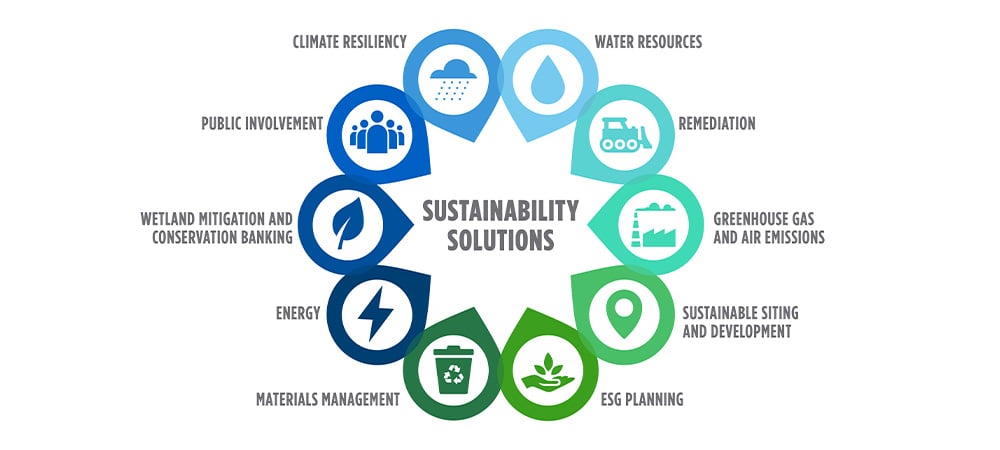Sustainable Development: Exploring Different Types and Approaches

When the term sustainable development is mentioned, it conjures images of green initiatives, renewable energy, and efforts to reduce carbon footprints. However, sustainable development is a broad and multifaceted concept that encompasses various types and approaches aimed at ensuring that future generations inherit a world capable of supporting their needs. This blog post delves into the different types of sustainable development and how they can be approached to foster an environment where ecological, economic, and social aspects harmoniously thrive.
Economic Sustainable Development

Economic sustainable development focuses on creating a stable economy that can endure over time. Here are some key areas:
- Renewable Resources: Utilizing resources that replenish naturally at a rate comparable to or faster than their consumption, like solar, wind, and biomass energy, reduces dependency on non-renewable resources.
- Efficient Consumption: Encouraging businesses and consumers to reduce waste and optimize resource use.
- Job Creation: Promoting green jobs in sectors like clean energy, sustainable agriculture, or eco-tourism that not only contribute to economic growth but also foster environmental protection.
- Economic Diversification: Reducing dependence on a single industry or resource, thereby reducing economic vulnerability.

Environmental Sustainable Development

Environmental sustainable development aims at preserving natural habitats, ecosystems, and biodiversity:
- Conservation: Protecting wildlife, maintaining ecological balance, and preserving natural landscapes.
- Pollution Control: Implementing measures to reduce air, water, and soil pollution through technologies and policies.
- Ecosystem Services: Valuing the benefits ecosystems provide, like climate regulation, water purification, and pollination, which contribute to human well-being.
- Climate Action: Initiatives to mitigate and adapt to climate change, such as carbon capture, reducing emissions, and promoting resilient infrastructure.
Social Sustainable Development

Social sustainability ensures that human rights, equity, and access to essential services are maintained for all segments of society:
- Healthcare and Education: Providing accessible healthcare and education to empower individuals and communities.
- Social Equity: Ensuring fair access to economic resources, opportunities, and reducing socio-economic disparities.
- Housing and Basic Services: Ensuring that all citizens have access to safe, affordable housing and sanitation.
- Cultural Heritage: Preserving cultural identities and traditions to foster social cohesion and inclusivity.
Technological Approaches to Sustainability

The role of technology in achieving sustainable development cannot be overstated:
- Smart Cities: Cities integrated with IoT and big data analytics to optimize energy use, reduce waste, and improve living conditions.
- Green Building: Designing and constructing buildings that use less energy and resources, producing less waste over their life cycle.
- Clean Energy Technologies: Innovations in solar panels, wind turbines, and battery storage to enhance the viability of renewable energy sources.
- Agro-Technology: Sustainable agriculture through precision farming, vertical farming, and hydroponics to reduce environmental impact while increasing yield.
Institutional and Governance Approaches
Governance plays a pivotal role in achieving sustainable development goals:
- Policy Frameworks: Enacting policies that encourage sustainable practices, from tax incentives to strict regulations.
- Multi-Stakeholder Engagement: Collaborations between governments, private sectors, NGOs, and local communities for sustainable outcomes.
- Education and Awareness: Implementing educational programs to increase public understanding of sustainability.
- Accountability and Transparency: Ensuring that governance mechanisms are transparent and hold leaders accountable for their environmental and social policies.

| Type of Sustainable Development | Key Areas |
|---|---|
| Economic | Resource Management, Job Creation, Economic Diversification |
| Environmental | Conservation, Pollution Control, Climate Action |
| Social | Healthcare, Equity, Cultural Preservation |
| Technological | Smart Cities, Green Building, Clean Energy |
| Institutional and Governance | Policies, Stakeholder Engagement, Education |
💡 Note: Each type of sustainable development is interconnected, where advancements in one area can positively impact others.
The journey towards sustainability is ongoing, requiring adaptive and innovative approaches. By understanding and integrating these different types and methods, we can foster a world that is not only livable but thrives in harmony with nature. This holistic approach to sustainable development is our pathway to ensuring a prosperous, equitable, and environmentally sound future for all.
What is the difference between sustainable development and economic growth?
+Sustainable development aims to achieve economic, social, and environmental sustainability, whereas economic growth focuses solely on increasing economic output, often without consideration for its environmental or social impacts.
How can individuals contribute to sustainable development?
+Individuals can contribute by reducing waste, conserving energy, advocating for sustainable policies, and making sustainable consumer choices like buying from companies with green practices.
Are technological advances always beneficial for sustainability?
+While technology can significantly enhance sustainability, its impact depends on how it’s applied. Unsustainable use of technology, like increased production of waste or inefficient energy use, can have negative outcomes.
Related Terms:
- Approaches of sustainable development
- Importance of sustainable development
- Changing perspective of sustainable development
- Sustainable development and economic growth



